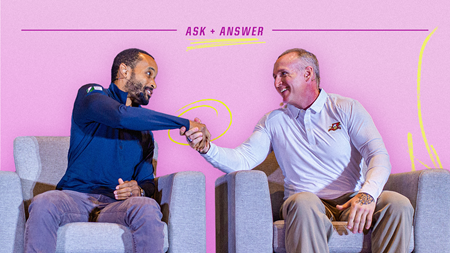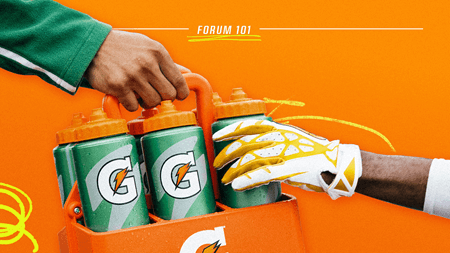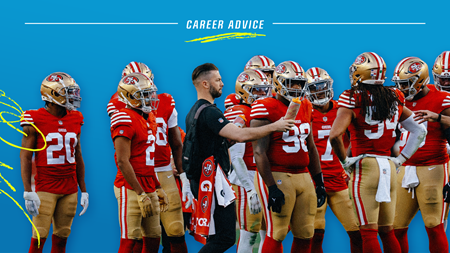Maintain the overall health and safety of your athletes and help prevent the spread of germs by following these guidelines during and post practice.
During Practice
Health & Wellness Guidelines
- Encourage coaches to allow free athlete access to their squeeze bottles for hydration breaks
- Stagger hydration/rest breaks to limit group size
- Discourage athletes from spitting #YouSpitYouSit
- Determine individual athlete hydration needs by conducting a fluid balance assessment and remember to:
- Sanitize scale after each weigh-in/weigh-out or have athletes wear shoes/socks
- Visit GSSIWeb to access the fluid loss calculator and help athletes determine their sweat rates
- Remind athletes to towel off BEFORE weighing out and collect their towels in biohazard bags
- Increase electrolyte intake for athletes at higher risk of cramping
- Eliminate any cut fruit or bulk food on the sidelines—use individually packaged items and space out on cleaned and sanitized tabletop surfaces
Bodily Fluid Cleanup Guidelines
Follow industry protocol when dealing with bodily fluid incidents during practice or training:
- Close or block off the affected area using signage or a safety cone. Using a commercial biohazard kit, put on a disposable plastic apron, face mask and shoe covers, then put on disposable gloves.
- Sprinkle absorbent material onto the spill and allow it to stand for the time specified by the product label or until the fluid is fully absorbed and jelled. Apply EPA-approved disinfectant to the spill, following label directions and local regulatory agency requirements. Spray area until it is completely covered with the disinfectant solution, in accordance with the product label.
- Use a disposable shovel and paper towels to completely pick up all of the gelled substance. Place it in a heavy-duty trash bag and seal the bag tightly according to your facility’s procedures. Place this bag into a second trash bag (leave open).
- Use paper towels and additional disinfectant (following label directions) to clean up surrounding areas that may have been affected by the spill, including around and under chairs, tables, benches, etc. Place all soiled paper towels into the outer trash bag.
- Once more, apply disinfectant to the area, following directions for use on the product label. Allow the product to penetrate and remain wet for the time specified on the product label. Wash, rinse and sanitize all food contact surfaces in the affected area.
- Once thorough cleaning and disinfecting are completed, remove the apron and shoe covers and place them into the outer trash bag. Remove gloves and dispose of them in the outer trash bag.
- Seal the bag tightly and place in the dumpster outside the establishment, having a second employee who is wearing proper gloves open doors and the dumpster to prevent cross-contamination.
- Once the affected area is dry, remove any wet floor signs and reopen the area.
Post Practice
Cleanliness Guidelines
SARS-CoV-2 (COVID-19) Guidelines:
- Use a "List-N" disinfectant that meets the EPA criteria for the virus that causes COVID-19.
- When using an EPA-registered disinfectant, follow the label directions for safe, effective use. NOTE: These products are for use on surfaces, NOT humans.
Equipment
Clean and sanitize coolers and squeeze bottles after every practice following CDC guidelines:
- Wash the container: For proper plastic disinfection, wash the plastic with antibacterial dish soap and hot water. The soap will immediately kill surface bacteria, but may not guarantee complete sterilization; combining washing with another method below is more effective. For the best results, always use a nondiluted alcohol rinse when washing. Additionally, both rubbing alcohol and grain alcohol kill bacteria on plastic surfaces.
- Soak the plastic: For complete plastic sterilization, soak the plastic container in a bleach-water solution of about 5% to 10% bleach. Bleach will not take long to disinfect, so the soaking time is minimal.
- Heat the plastic: This can be done in a hot dishwasher rinse, but a microwave is more effective. Wet the plastic container first, as the interaction between the microwave's heat and water is what causes sterilization. Place the plastic container in a microwave on high power for approximately two minutes. Be cautious, as both the dishwasher and microwave can melt plastic. Polypropylene plastics are stronger than standard plastics and can withstand high heat.
- Don’t forget: Any plastic or laminate tabletops used for items during practice must also be cleaned.
Electronics
Remember these tips when cleaning electronics, such as tablets, touch screens, wearables, remote controls, etc.:
- Equip electronics with wipeable covers whenever possible
- Follow manufacturer’s instruction for cleaning and disinfecting
- Utilize alcohol-based wipes or sprays containing at least 70% alcohol on items without specific cleaning instructions
- Dry surface thoroughly









